If you’re on a quest for the right running shoes for wide feet, you’re not alone. Many runners struggle with finding a shoe that fits comfortably, supports their arch, and allows them to hit the ground running (literally!) without discomfort or injuries. In this comprehensive guide, we delve into the best running shoes for wide feet, provide tips for selecting the right pair, and share insights from real-world experiences. Let’s lace up and get started!
Understanding the Importance of Choosing the Right Fit
Choosing the right running shoe is critical for everyone, but it’s especially vital for runners with wide feet. A shoe that fits properly can prevent blisters, calluses, and injuries while enhancing your performance and comfort. Many shoe brands manufacture shoes designed specifically for wider feet, making it easier to find a suitable option.
Impacts of Wearing Wrong-Fitting Shoes on Performance
Wearing running shoes that are too narrow can lead to numerous issues, including:
- Blisters and Calluses: Friction from a narrow shoe can lead to painful blisters.
- Arch Pain: Insufficient support can cause arch pain, hindering your running performance.
- Toe Splay: Lack of space can restrict natural toe movement, affecting balance and comfort.
How to Determine Your Shoe Width
Understanding your shoe size and width is the first step in selecting the best running shoes for wide feet. Here’s how you can measure your foot size at home:
- Place a piece of paper on the floor against a wall.
- Stand on the paper with your heel against the wall.
- Mark the longest part of your foot on the paper.
- Measure the length from the end of the paper to the mark.
- Repeat for the width by placing the paper sideways and measuring the widest part of your foot.
Understanding Shoe Width Designations
Shoe widths typically range from narrow (B) to extra wide (EE). Here’s a quick breakdown:
- B: Narrow
- D: Standard (Men’s Width)
- 2E: Wide (Men’s Width)
- 4E: Extra Wide (Men’s Width)
- C: Narrow (Women’s Width)
- D: Standard (Women’s Width)
- 2E: Wide (Women’s Width)
Top Running Shoe Brands for Wide Feet
Some brands have developed a reputation for catering to runners with wide feet. Here are our top picks:
| Brand | Popular Models | Best Features |
|---|---|---|
| New Balance | Fresh Foam 1080, 860 | Ample cushioning, available in various widths |
| Brooks | Ghost, Adrenaline GTS | Supportive fit and comfortable seamless upper |
| ASICS | Gel-Kayano, Gel-Nimbus | Gel cushioning and great arch support |
| Saucony | Ride, Guide | Responsive cushioning with breathable mesh overlays |
Best Running Shoes for Wide Feet in 2023
Here’s a roundup of the top running shoes for wide feet currently available in the market:
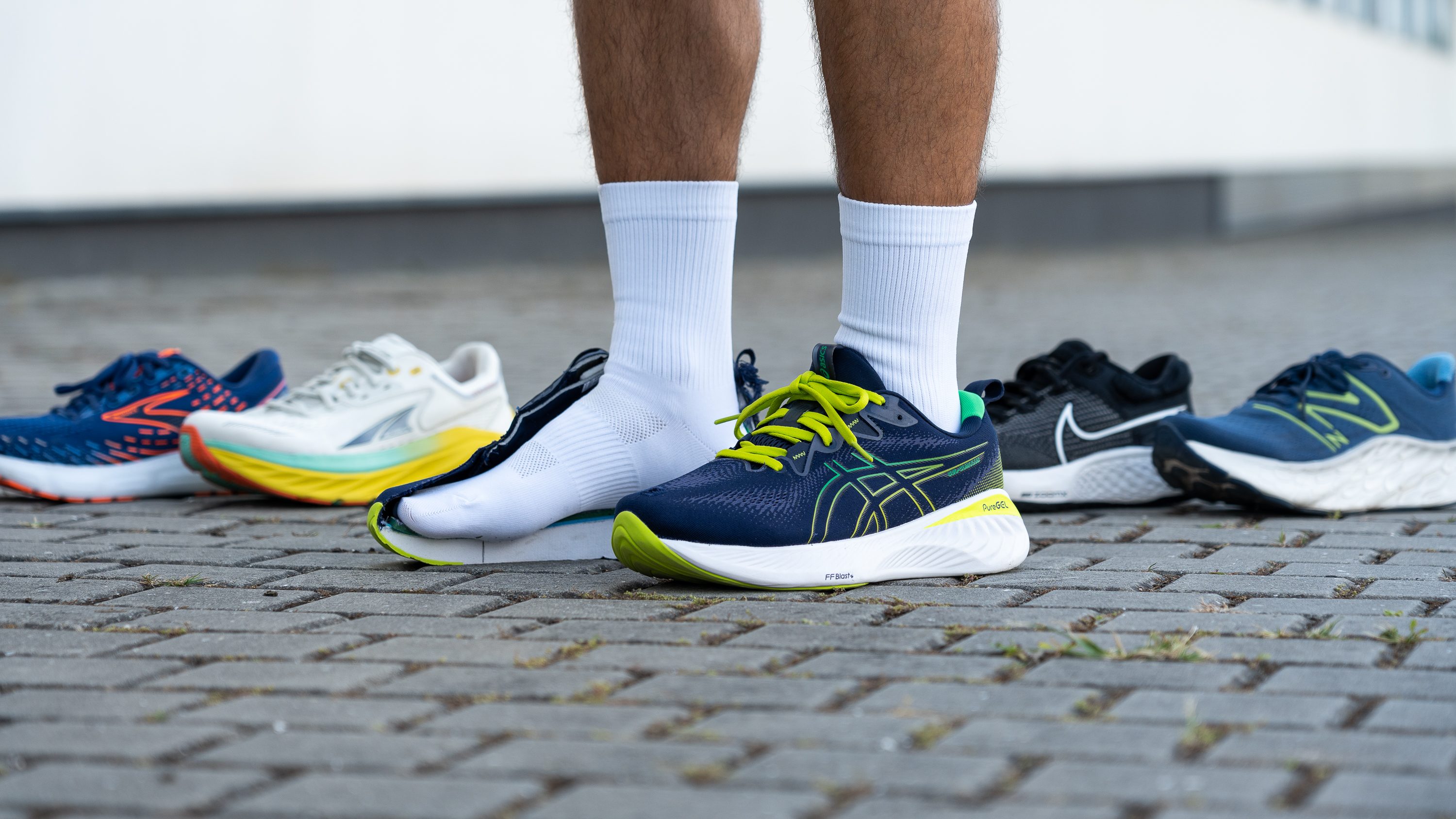
1. New Balance Fresh Foam 1080v12
Rating: 4.9/5
The New Balance Fresh Foam 1080v12 is a favorite among runners with wide feet due to its spacious toe box and luxurious cushioning. The shoe features a Fresh Foam midsole that provides plush comfort, perfect for long runs. The engineered mesh upper adapts to the foot while offering breathability.
Pros:
- Excellent cushioning for long-distance runs.
- Available in multiple widths.
- Stylish design with a variety of color options.
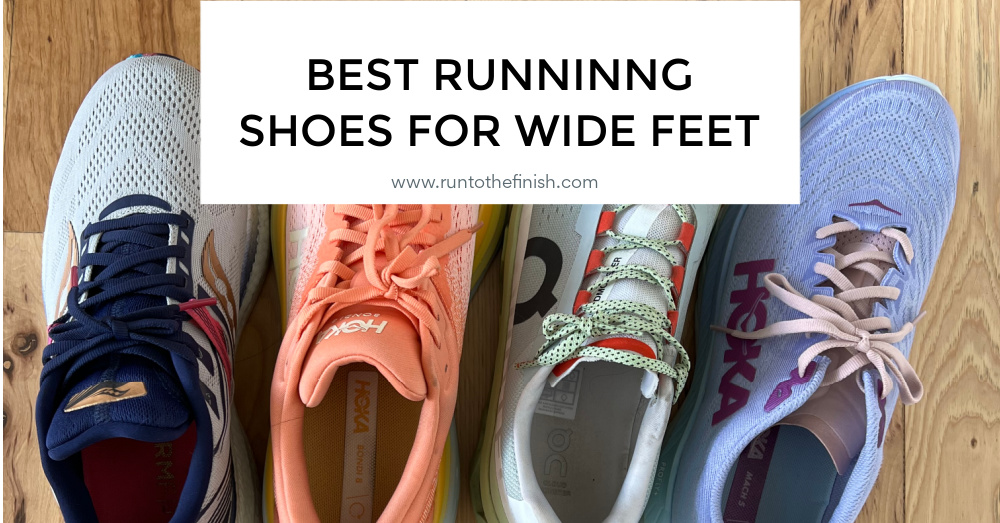
Cons:
- May feel too cushioned for some runners.
- Higher price point compared to other options.
2. Brooks Ghost 14
Rating: 4.8/5
The Brooks Ghost 14 is known for its combination of comfort and support, making it ideal for runners with wider feet. It features a soft, breathable upper and a balanced, soft cushioning that makes every stride feel smooth.

Pros:
- Responsive cushioning enables efficient energy return.
- Great for both casual runners and those training for races.
Cons:
- Some users report a break-in period.
- Not suitable for trail running.
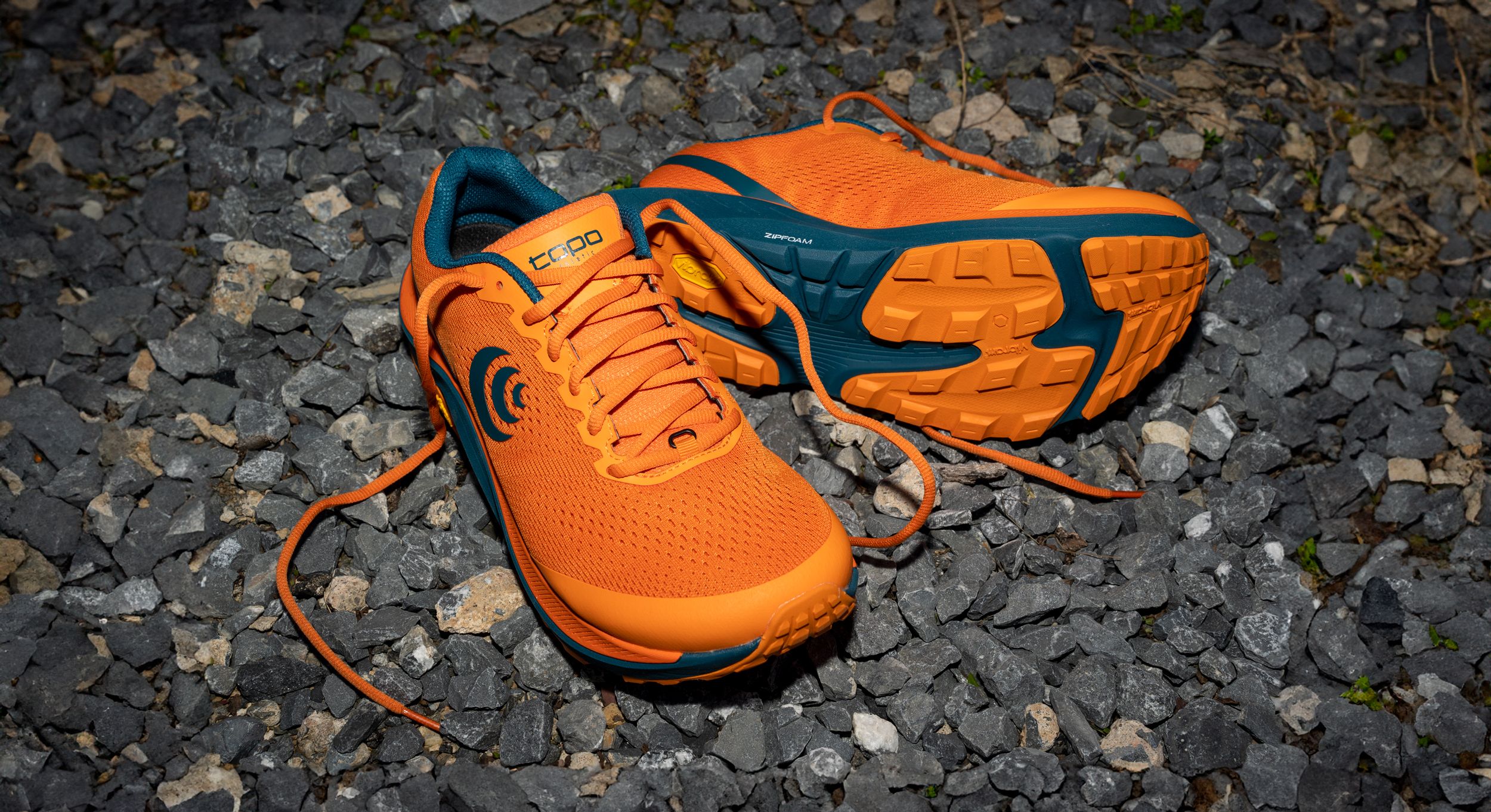
3. ASICS Gel-Kayano 28
Rating: 4.7/5
The ASICS Gel-Kayano 28 is a stability shoe designed for overpronators and those needing extra support. Its GEL technology provides exceptional shock absorption, making it suitable for runners with wider feet who need that extra stability.
Pros:
- Incredible support for long distances.
- Durable construction makes it suitable for various terrains.
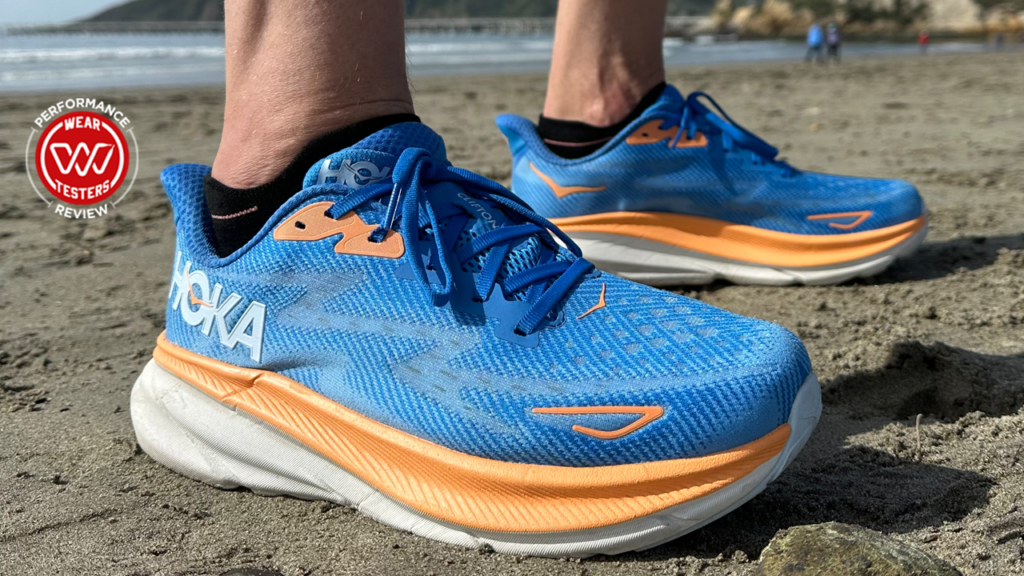
Cons:
- Heavier than other options.
- Higher price point.
4. Saucony Triumph 19
Rating: 4.6/5
The Triumph 19 is designed for runners looking for a plush ride with extra room for their wide feet. Its PWRRUN+ cushioning is both responsive and soft, providing comfort for every stride.
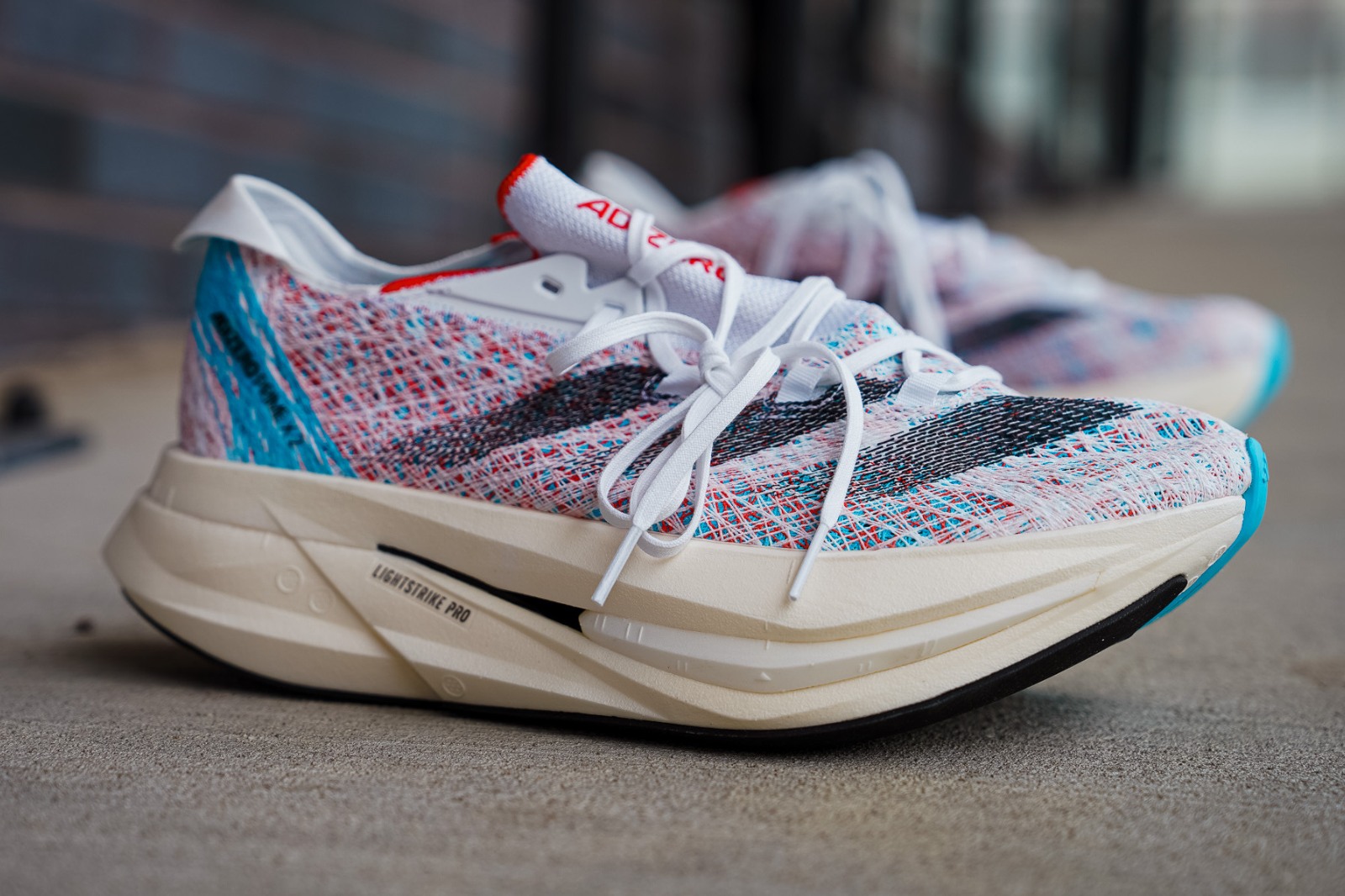
Pros:
- Great for long-distance runners.
- Breathable upper enhances comfort.
Cons:
- Some users may find it too soft for speed work.
- Price can be higher than competitors.

How to Choose the Best Running Shoes for Wide Feet
Here are some tips to help you make an informed decision when shopping for running shoes designed for wide feet:
1. Understand Your Running Style
Your running style plays a significant role in determining which shoe might work best for you. Consider if you are a heel striker, mid-foot striker, or forefoot striker, as this will affect your choice in cushioning and support.

2. Consider the Terrain
Different terrains can dictate the type of shoe you need. Trail running shoes offer more grip and stability, while road running shoes prioritize cushioning and comfort for hard surfaces.
3. Try Before You Buy
Whenever possible, try on shoes before making a purchase. Walk or jog around the store to test the fit. Ensure there’s enough room in the toe box and that your heels feel secure without slipping.
4. Online Reviews and Recommendations
Take advantage of online resources, such as reviews and ratings. Websites like Runner’s World can be great for in-depth reviews from real runners.
FAQs about Running Shoes for Wide Feet
1. What are the best brands for running shoes for wide feet?
Brands like New Balance, Brooks, ASICS, and Saucony are well-known for their wide-fit options.
2. How do I know if I need wide shoes?
If you frequently experience blisters, pinching, or discomfort in your current shoes, it might be a sign that you need wider footwear.
3. Are there specific features to look for in wide running shoes?
Look for shoes with a spacious toe box, flexible uppers, and ample cushioning to accommodate wider feet comfortably.
4. Can I stretch my running shoes to make them wider?
Some materials can stretch slightly, but it’s best to choose shoes designed for wide feet to avoid compromising support and comfort.
5. Should I always buy wide shoes as a runner with wide feet?
If your foot is wider than average, it’s advisable to opt for wide shoes, especially for long distances, to prevent injuries.
6. Can wide shoes affect my performance negatively?
Wearing shoes that are too wide can cause instability, while properly fitting wide shoes can enhance comfort and performance.
7. What is the average price range for quality running shoes for wide feet?
Quality running shoes for wide feet typically range from $100 to $200, depending on the brand and technology used.
8. How often should I replace my running shoes?
Generally, running shoes should be replaced every 300 to 500 miles, depending on wear and tear.
9. Can I use running shoes for everyday wear?
While running shoes are designed for performance, many people find them comfortable for everyday use as well.
10. Is it better to have shoes fitted by a professional?
A professional fitting can provide tailored recommendations based on your foot shape, running style, and personal preferences.
11. What should I do if my running shoes still feel tight after buying wide sizes?
If your shoes still feel tight, consider trying different models or brands, as fit can vary significantly between manufacturers.
Conclusion
Choosing the right running shoe for wide feet doesn’t have to be a daunting task. By understanding your needs, exploring reputable brands, and trying different models, you will be well on your way to finding the perfect pair. Remember, the right shoe can enhance your performance, provide comfort, and help prevent injuries. Happy running!